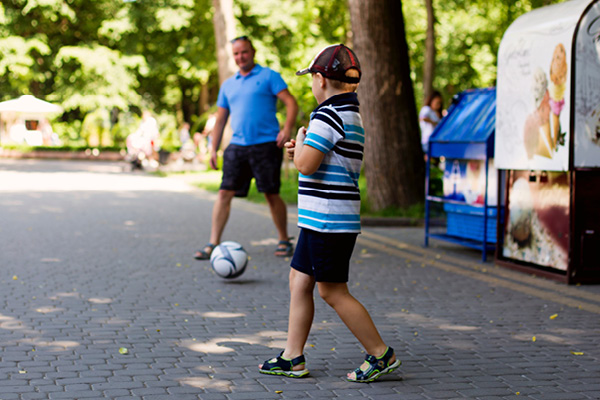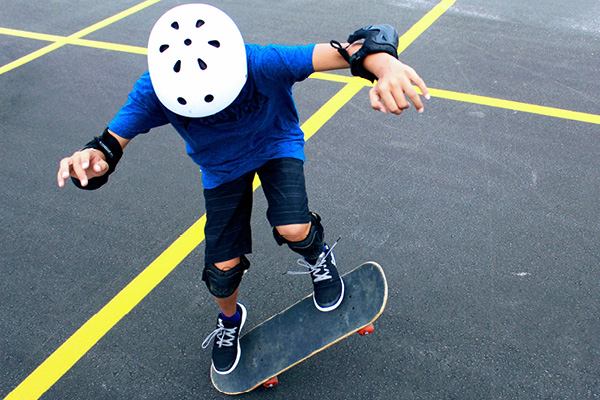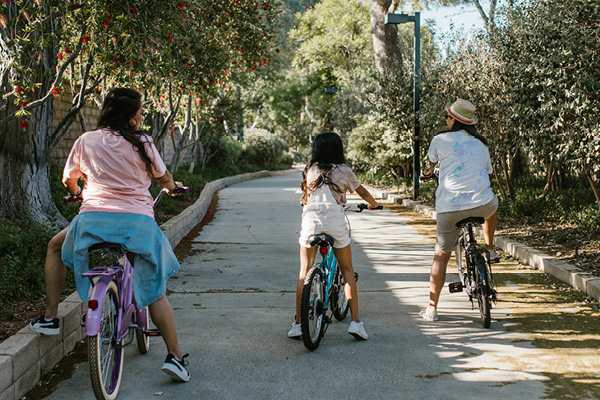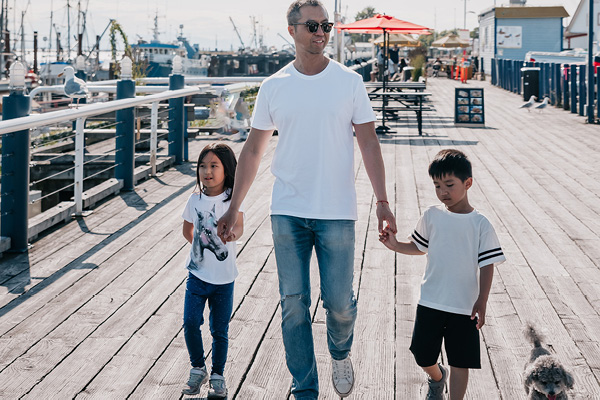Did you know in Australia, one in 14 children and young people (4 -17 years) experience an anxiety disorder? (Queensland Government).
Although there’s no one-fix treatment for those who experience anxiety, we know simple things like exercise can help relieve muscle tension, increase endorphins, improve kids’ sleep, and alleviate anxiety.
Ways to manage anxiety include:
Parenting expert Michael Grose, who along with Dr Jodi Richardson, co-wrote Anxious Kids: How children can turn their anxiety into resilience (2019), shared some great tips on how to manage anxiety in our latest Life Education Queensland podcast including how big-limbed physical activity – can help release anxious feelings.
Check out these 7 tips to get your kids moving outdoors:
Is your family up for a challenge or do you have someone in the family with a not-so hidden competitive streak? Turn your next outdoor adventure into a game.
It could be as simple as counting steps on a pedometer, playing eye spy, or seeing who can spot 10 red cars first, or bring out a ball to kick or throw, track your walk with one of the many Apps and see if you can draw a smiley face on the map. Adding a bit of friendly family competition with a side of exercise is a win for everyone involved.

Let’s face it. Not all of us are skilled with a ball, have the mental and physical fortitude for long-distance running, or are dancing prodigies like Billy Elliot. If your child or family are just not that into traditional sports – that’s fine.
Think of things outside the box. Maybe have a go at rock climbing, frisbee golf, martial arts, skateboarding, BMX, surfing, ice-skating, rollerblading, pickleball, parkour or free-running, obstacle courses, trampolines, or hiking. Really, the list could go on and on… As the saying goes, don’t knock it til’ you try it!

If your child has been working hard with homework or other school-related tasks, a well-earned break to get outside could be a simple reward.
A child might be happy getting outside to kick or throw a ball around if it means a break from homework.
Does your child love to negotiate with you? If this is your child’s style, then consider trading time spent on their digital device for more green time outdoors. An hour on the digital device means one hour that needs to be outside activity.
Be sure to know what you consider as outside activity whether that’s going for a bike ride, kicking around a ball, or taking the dog for a walk. Consider fine-tuning your bargaining skills before getting into this negotiation.

Sometimes for children, if something is perceived to be ‘cool’, that’s enough to get them off their digital device and out doing something different. Maybe it’s a new trend of pilates, hot yoga, or even online Cosmic Kids Yoga that you can do anywhere at any time. Do you know some places now even offer aerial yoga? Sounds cool enough to try it in our books, and that might be the same for your child!
If drama, the arts, and performance are more your child’s style – then look at harnessing that into more expressive and creative physical activity.
Grose says it’s important to encourage kids to find an activity that embraces the three F’s: fun, free and flow. So, the activity should be fun to do; be something a child freely wants to participate in; (not just take part because their parents are making them do it) and it should bring about a sense of flow. In other words, kids get so lost in the enjoyment of the activity they lose sense of time and place, and therefore, can detach from worrying thoughts.
There are plenty of options that might meet the three F’s for your child. Consider dance (ballet, hip-hop, jazz, cha-cha, and more), gymnastics, diving, figure skating, synchronized swimming, cheerleading, or skateboarding.
Some children and young people aren’t that into traditional sports or physical activity. If they have tried it and don’t love it, that’s ok.
Even if the physical activity is as simple as taking the dog for a walk around the block, going for a bike ride or heading out on the scooter – the main goal here is to get out and get moving.
Movement matters when it comes to relieving and managing stress or anxiety, and in general, taking care of overall health and wellbeing.

For more top tips from parenting expert Michael Grose, you can listen to our podcast Helping children turn anxiety into resilience here. Or for a deep dive into this topic, you can purchase his book with Dr Jodi Richardson, Anxious Kids: How children can turn their anxiety into resilience here.
Learn some other tips with blogs from the podcast here Gen anxious: How to help your child dial down anxiety and Can diet impact children’s mental wellbeing?
To hear more of our free resources for families, visit our podcasts here, or you can find us on your favourite podcast platforms.